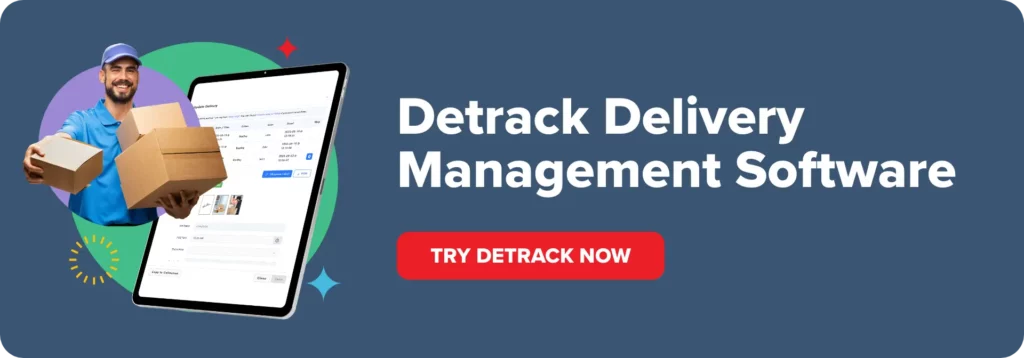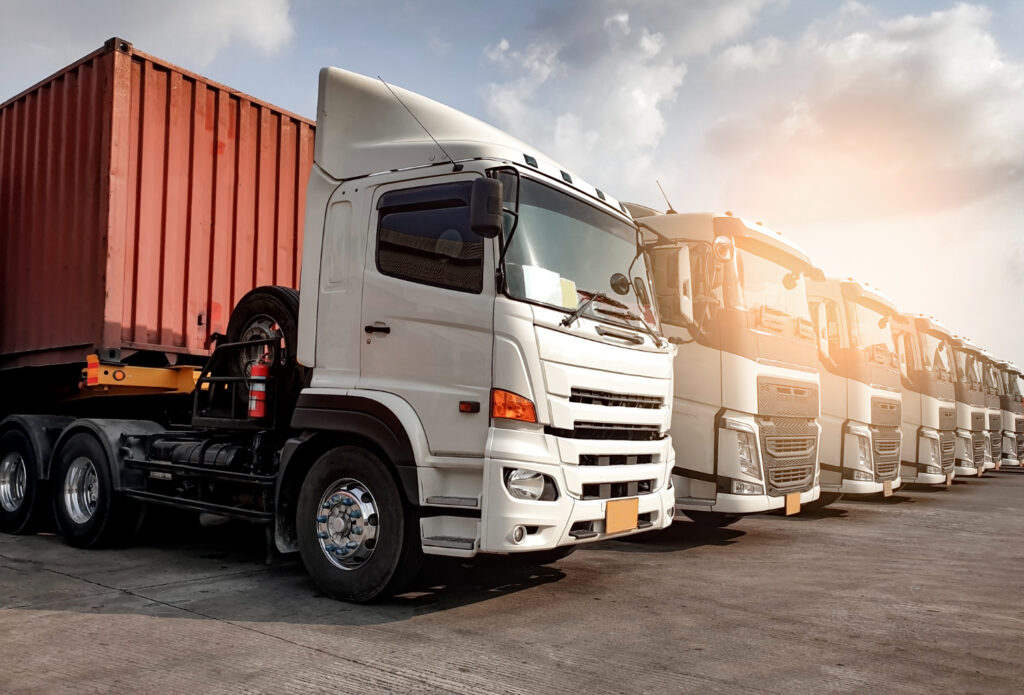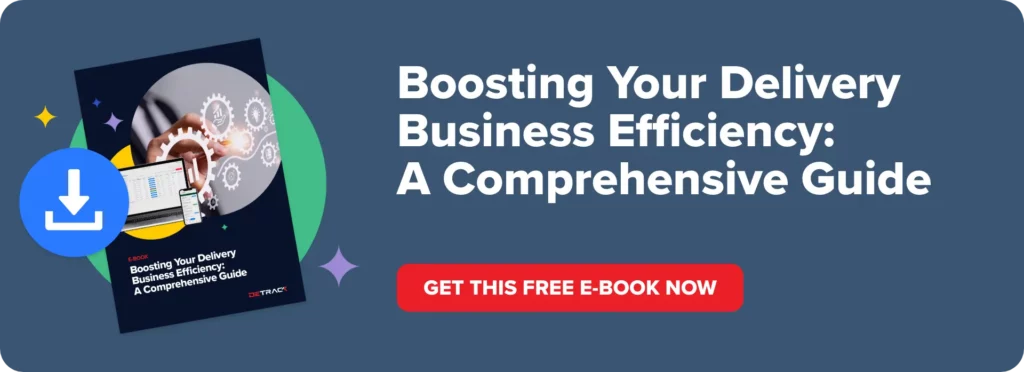Efficient transportation is the backbone of successful businesses, particularly logistics and supply chain management.
As a business owner navigating the intricate world of shipping and transportation, understanding linehaul trucking is paramount to streamline operations and enhance customer satisfaction.
Lost in Transit? Find Your Way with Detrack!
With Detrack’s real-time tracking, efficient routing, and streamlined communication, you’ll never lose sight of your shipments again!
What is Linehaul Trucking?
Linehaul trucking refers to transporting goods or cargo over long distances between terminals or hubs. It involves moving freight between cities, regions, or even countries, typically covering extended routes with minimal stops for loading or unloading.
Linehaul trucking is a crucial part of the transportation and logistics industry, facilitating the movement of goods from manufacturing plants, distribution centers, or ports to various destinations.
These trucks often operate on scheduled routes, transporting large volumes of freight efficiently and quickly over highways or interstates.
Linehaul vs. Long Haul: What’s the Difference?
In transportation and logistics, the distinctions between linehaul and long haul are fundamental in understanding the nuances of freight movement. Both concepts revolve around transporting goods over considerable distances, yet they differ significantly in their scope, focus, and operational objectives.
The following comparison table delineates the key disparities between linehaul and long-haul trucking, shedding light on their respective approaches in traversing distances, route emphasis, terminal connections, travel durations, and operational priorities within the logistics landscape.
| Aspect | Linehaul | Long Haul |
| Distance Covered | It covers medium to long distances between specific terminals or hubs. | It involves transportation over extensive distances, often spanning regions, states, or countries. |
| Route Focus | Follows scheduled routes between terminals, emphasizing efficient movement between specific points within a network. | It can involve various routes and destinations, focusing on covering vast distances over extended durations. |
| Stops and Terminals | Primarily moves cargo between fixed terminals or hubs, where freight might be transferred for further distribution. | It might not be confined to specific terminals, focusing more on the broader distance between geographical points without frequent stops. |
| Travel Duration | Aims for efficient movement of goods over defined routes, minimizing delays between terminals. | Emphasizes extended travel periods, sometimes cross-country or international, with longer delivery timeframes. |
| Scope | Part of the broader logistics network, linking specific points or hubs within the supply chain. | Covers extensive distances as part of the transportation process, irrespective of fixed terminal points. |
| Operational Emphasis | Focuses on timely and efficient movement between specific terminals or hubs within a transportation network. | Emphasizes covering vast distances, often requiring endurance and logistical planning for extended travel durations. |
How Does Linehaul Transportation Impact the Shipping Process?
Initiation and Planning
Efficient linehaul transportation significantly influences shipping initiation and planning stages. Route Selection involves determining the most optimal paths considering factors like distance, terrain, and traffic to minimize transit time and costs.
Capacity planning and scheduling involve allocating resources such as trucks, drivers, and facilities. Linehaul transportation affects these aspects by shaping decisions on which routes to prioritize and how to schedule shipments to maximize efficiency and minimize downtime.
Cost Implications
Linehaul transportation has direct, indirect, and operational cost implications. Direct expenses involve fuel, vehicle maintenance, and driver wages. Indirect costs encompass administrative expenses and overheads associated with managing transportation.
Operational expenses cover unforeseen costs like delays, damages, or route diversions. These costs are influenced by the choice of transportation routes, vehicle types used, and scheduling efficiency.
Transit Time and Reliability
Linehaul transportation determines transit time and reliability. Accurate Time Prediction is crucial for meeting delivery deadlines, affecting customer satisfaction and operational efficiency.
A Buffer for Delays ensures that unforeseen circumstances such as traffic, weather, or mechanical issues do not significantly impact delivery timelines, maintaining reliability and customer trust.
Cargo Safety and Integrity
The safety and integrity of cargo rely heavily on how linehaul transportation is executed. Proper Packaging Requirements are essential to protect goods from damage during transit, especially for fragile or sensitive items.
Careful Handling and Transfers during loading, unloading, and transfers between vehicles minimize the risk of damage or loss.
Environmental and Regulatory Considerations
Linehaul transportation must comply with environmental standards and legal regulations. This includes adhering to emissions guidelines, fuel efficiency standards, and transportation-specific regulations concerning weight limits, hazardous materials, or vehicle maintenance.
Compliance with these regulations ensures legal adherence and promotes sustainability in shipping operations.
Customer Experience and Communication
Effective linehaul transportation influences customer experience and communication. Timely and accurate updates on shipment status, estimated arrival times, and potential delays are crucial for customer satisfaction.
Clear and transparent communication regarding any changes or issues during transportation helps manage customer expectations and maintain trust.
Integration with Other Logistics Processes
Integration with other logistics processes, such as last-mile delivery and reverse logistics, is impacted by linehaul transportation. Efficient linehaul operations ensure smooth transitions between different shipping stages, optimizing the final delivery to the customer.
Additionally, well-managed linehaul transportation facilitates effective returns and reverse logistics handling, minimizing costs and enhancing customer service.
Linehaul Charges and How They’re Calculated
- Distance and Zones – Linehaul charges often depend on Distance and Zones. This can involve Mileage-Based Pricing, where the distance determines the cost traveled. Alternatively, Zonal pricing divides regions into zones with a predetermined rate, allowing for simpler pricing structures based on geographical areas.
- Weight and Volume Considerations – Weight and volume are crucial factors affecting linehaul charges. Carriers may implement Peak Season Surcharges during high-demand periods or offer Off-Peak discounts to incentivize shipping during slower times. These adjustments accommodate variations in cargo volume and weight fluctuations.
- Mode of Transportation – Different modes of transportation (such as trucking, rail, air, or sea) have varying cost structures affecting linehaul charges. Each mode has its pricing dynamics based on speed, capacity, and accessibility, influencing the overall shipping costs.
- Seasonality and Demand Fluctuations – Seasonality and Demand Fluctuations impact linehaul charges. During peak seasons, there might be Special Equipment Needs or increased Fuel Surcharges due to higher demand. Additionally, carriers may apply Wait Time or Detention Fees to manage delays caused by increased demand.
- Accessorial Charges – Accessorial Charges are additional fees beyond standard shipping rates. These charges cover fuel surcharges, inside delivery, re-delivery attempts, or extra handling, reflecting additional services requested or required during transportation.
- Contractual Agreements and Negotiations – Contractual Agreements and Negotiations between shippers and carriers can also influence linehaul charges. Discounts or adjustments may be agreed upon based on volume commitments, long-term contracts, or preferred customer relationships.
- Toll and Highway Fees – Toll and Highway Fees are charges for using specific roads, bridges, or tunnels. These fees are often considered in linehaul charges, especially for routes that require passing through toll zones or using toll roads.
- Regulatory and Compliance Costs – Compliance with regulations and industry standards incurs costs that can impact linehaul charges. These expenses include adhering to environmental regulations, safety protocols, and various legal compliance requirements set by governing bodies.
- Technology and Automation in Pricing – Advancements in Technology and Automation influence linehaul charges. Dynamic Pricing Models utilize real-time data to adjust rates based on market conditions, optimizing pricing strategies. Integrated Systems streamline operations, enhancing efficiency and accuracy in pricing calculations.
Benefits Of Line Haul Tracking
Works Well With 3PLs
Line haul tracking integrates seamlessly with third-party logistics providers (3PLs), facilitating real-time visibility into shipment movements. This synchronization enhances collaboration and efficiency between different parties involved in the transportation process, allowing for better coordination and timely decision-making.
Reduces Delivery Costs
By providing accurate tracking information on shipments, line haul tracking helps optimize routes, minimize idle time, and reduce unnecessary detours. This optimization leads to more fuel-efficient transportation, lower maintenance costs, and overall savings in delivery expenses.
Improves Customer Experience
Enhanced visibility and transparency in the delivery process contribute significantly to an improved customer experience. Customers can track their shipments in real-time, allowing them to plan accordingly and anticipate delivery times accurately. This transparency boosts customer satisfaction and loyalty.
Fewer Damages
Line haul tracking enables better monitoring of shipments throughout the transportation journey. This visibility helps identify potential risks or issues that might lead to damages. Prompt intervention or necessary precautions can be taken to prevent damages, reducing incidents during transit.
Faster Deliveries
Efficient tracking systems streamline transportation, enabling logistics operators to identify the most optimal routes and strategies for faster deliveries. Real-time monitoring also assists in promptly addressing any delays or obstacles, ensuring timely and reliable deliveries.
Tips to Optimize Logistics in Linehaul Transportation
Real-time Tracking and Visibility
- Implement robust tracking systems using GPS, RFID, or IoT devices to monitor shipments in real-time.
- Use cloud-based platforms or software that offer real-time updates and visibility to stakeholders.
- Provide customers and internal teams access to track shipments and receive updates on delivery statuses.
Advanced Route Planning
- Utilize advanced route optimization software that considers factors such as traffic patterns, weather conditions, vehicle capacity, and delivery schedules.
- Incorporate machine learning algorithms to continuously improve route planning based on historical data and real-time information.
Data-Driven Decision Making
- Gather and analyze data related to transportation operations, including fuel consumption, driver behavior, delivery times, and route efficiency.
- Use data analytics tools to derive actionable insights for making informed decisions to optimize processes and reduce inefficiencies.
Streamlined Communication
- Implement communication platforms that allow seamless and real-time communication between drivers, dispatchers, and other stakeholders.
- Use mobile apps or messaging systems to ensure quick and efficient communication regarding schedule changes, routes, or unforeseen circumstances.
Efficient Load Planning
- Invest in load optimization software to maximize truck capacity while minimizing transportation costs.
- Consider weight distribution, cargo compatibility, and delivery schedules when planning loads.
Predictive Maintenance Schedules
- Employ predictive maintenance technology that uses sensors and data analytics to forecast equipment failures before they occur.
- Schedule maintenance tasks based on predictive analytics to minimize downtime and avoid unexpected breakdowns.
Enhancing Driver Safety and Performance
- Provide regular training programs to improve driver skills, safety protocols, and awareness of regulations.
- Equip vehicles with safety technologies such as collision avoidance systems, telematics, and driver monitoring systems.
Automated Documentation and Compliance
- Implement automated systems for generating, managing, and storing documentation related to transportation, including invoices, bills of lading, and compliance records.
- Utilize software that ensures adherence to regulatory requirements and automates compliance checks.
Integration with Third-Party Systems
- Ensure seamless integration between your logistics systems and third-party platforms (e.g., suppliers, carriers, customers, accounting, and stock systems) to facilitate data exchange and streamline processes.
Customer-Centric Delivery Schedule
- Offer flexible delivery options that align with customer preferences, such as specific time windows, tracking capabilities, and notification alerts.
- Use customer feedback and data analytics to continuously refine and tailor delivery schedules to meet customer needs.
Ready to Implement Efficient Linehaul Operations?
In conclusion, grasping the fundamentals of linehaul trucking is pivotal for any business owner navigating the logistics landscape. This guide serves as a roadmap, shedding light on the intricacies of this vital industry.
Understanding the nuances of linehaul trucking – from its cost structures to optimizing routes and leveraging technology – empowers entrepreneurs to make informed decisions, streamline operations, and ultimately enhance their bottom line.
By recognizing the significance of this crucial aspect of transportation, business owners can better navigate the challenges and opportunities within the world of linehaul trucking, paving the way for efficient and successful logistics management.
Lost in Transit? Find Your Way with Detrack!
With Detrack’s real-time tracking, efficient routing, and streamlined communication, you’ll never lose sight of your shipments again!














